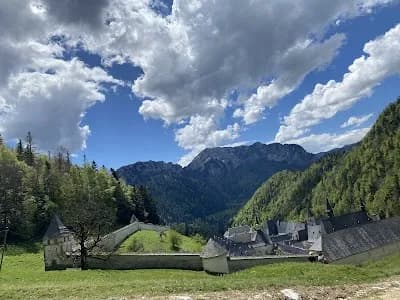
St. Bruno
Founder of the Carthusian Order
"In silence and solitude, I encounter the Divine."
Saint Facts
- Origin:
- Italy
- Gender:
- Male
- Vocation:
- Priest
- Birth:
- 1030
- Feast Day:
- Oct 6
- Death:
- 1101
Saint Details
St. Bruno, born around 1030 in Cologne, was a renowned scholar and educator before founding the Carthusian Order. He studied theology in Reims and later became the head of the cathedral school there, serving from 1057 to 1075. Among his notable students was Eudes de Châtillon, who later became Pope Urban II. Bruno's tenure as chancellor of the church of Reims ended in 1076 due to conflicts with the new archbishop, Manasses de Gournai. Following the archbishop's deposition in 1080, Bruno was considered for the see but declined, opting instead for a contemplative life.
In 1084, Bruno and six companions established the Grande Chartreuse monastery in the Chartreuse Mountains near Grenoble, France, marking the beginning of the Carthusian Order. This monastic community emphasized solitude and contemplation. Bruno also founded the second Carthusian community. He later moved to Calabria, Italy, where he died on October 6, 1101. Although not formally canonized due to the Carthusian Order's humility, Bruno was included in the General Roman Calendar and is celebrated on October 6. His legacy as a founder of monastic reform and a proponent of contemplative spirituality continues to influence Catholic tradition.
Associated Holy Sites

Couvent de Grande Chartreu
Couvent de Grande Chartreu, 38380 Saint-Pierre-de-Chartreuse, France

Monastère de la Grande Chartreuse - fermé au public
1084 Allée de la Grande Chartreuse, 38380 Saint-Pierre-de-Chartreuse, France
Details for: Couvent de Grande Chartreu
The Monastère de la Grande Chartreuse, located in the Chartreuse Mountains near Grenoble, France, is the motherhouse of the Carthusian Order, founded by Saint Bruno in 1084. This historic monastery is renowned for its deep spiritual significance and its role in preserving the Carthusian way of life, which emphasizes solitude, silence, and prayer. While the monastery itself is closed to the public to maintain the monks contemplative lifestyle, pilgrims can visit the nearby Musée de la Grande Chartreuse to learn about the orders history, spirituality, and the production of the famous Chartreuse liqueur. The site holds immense importance for Catholics as a symbol of monastic devotion and a place where the Carthusian tradition has been faithfully upheld for nearly a millennium. Its serene mountain setting and spiritual legacy continue to inspire visitors seeking reflection and connection to the monastic heritage.
🙏 No spam. Just grace. Unsubscribe anytime.